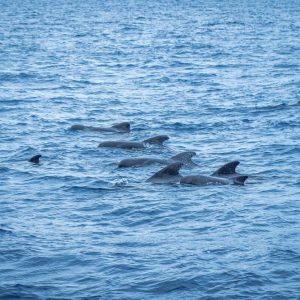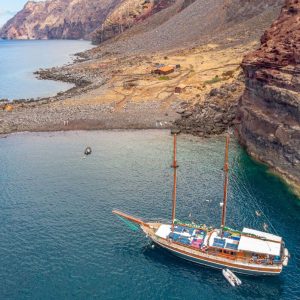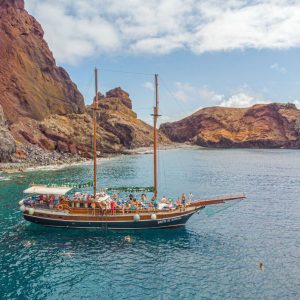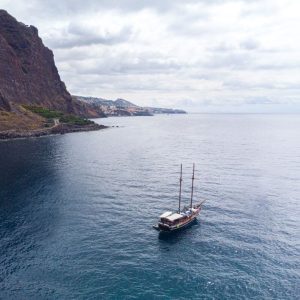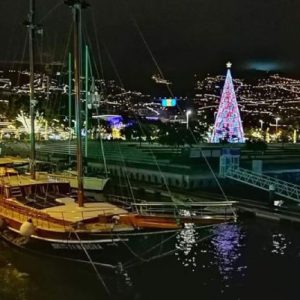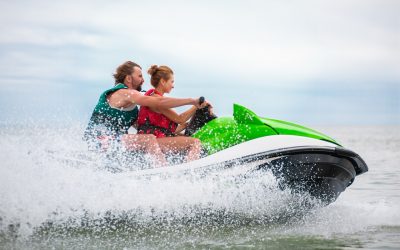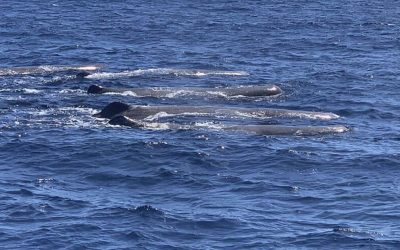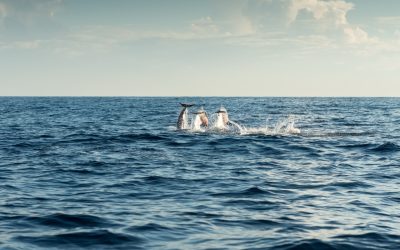Imagine seeing a pod of dolphins leaping playfully beside your boat or witnessing the powerful emergence of a sperm whale from the depths of the Atlantic. In Madeira, these moments aren’t just rare, they’re part of daily life at sea. A whale watching tour in Madeira is one of the island’s most exciting and unforgettable experiences, perfect for families, couples, and solo travellers alike.
In this article, we’ll explore everything you can expect from a whale watching tour: which species you might see, the best times of year to go, and practical tips to make the most of your adventure.
Why Madeira is Perfect for Whale Watching
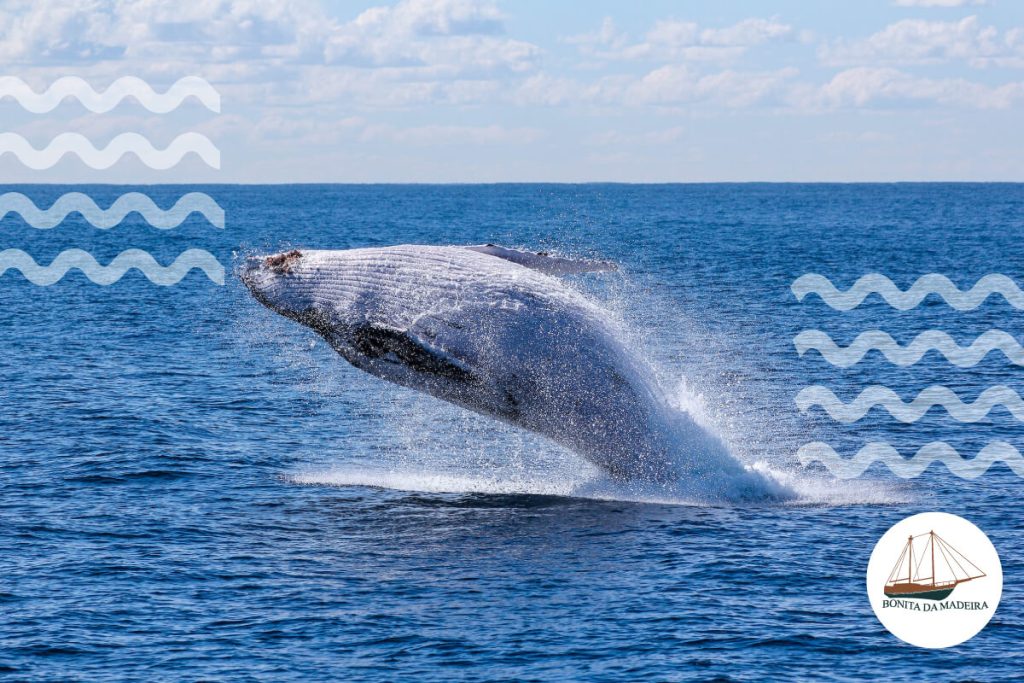
Madeira is a true paradise for marine wildlife enthusiasts. Located in the middle of the Atlantic Ocean, the island benefits from deep waters just a short distance from the coast, an ideal environment for cetaceans.
Thanks to its mild climate year-round and rich marine biodiversity, Madeira is one of Europe’s top destinations for dolphin and whale watching. The high frequency of sightings, combined with the island’s dramatic coastal scenery, makes every tour both exciting and unique.
Species You Might Encounter on a Whale Watching Tour in Madeira
One of the highlights of a whale watching tour in Madeira is the incredible variety of cetacean species that inhabit or migrate through these waters. Here’s what you might spot:
- Sperm Whale (Physeter macrocephalus)
One of the largest whale species in the world. Sperm whales can be observed throughout the year and are recognised for their deep, prolonged dives. - Bryde’s Whale (Balaenoptera brydei)
More frequently spotted in spring and summer. Fast and sleek, this whale is often shy but fascinating to observe. - Bottlenose Dolphin (Tursiops truncatus)
A common resident species. Intelligent, curious, and often seen very close to the boats. - Common Dolphin (Delphinus delphis)
Known for their playful behaviour and acrobatic displays, they are often seen in large groups. - Atlantic Spotted Dolphin (Stenella frontalis)
Typically seen during the warmer months. Their distinctive spotted skin makes them easy to identify. - Short-finned Pilot Whale (Globicephala macrorhynchus)
A year-round resident. They travel in tight-knit family groups and are most often found in deeper waters.
Each trip offers something different; no two tours are the same, and the sense of anticipation is part of the magic. Book your Whale watching boat tour with Bonita da Madeira.
Best Time of Year for a Whale Watching Tour in Madeira
One of the great advantages of booking a whale watching tour in Madeira is that it’s available all year long. However, depending on the season, the experience may vary:
- Spring and Summer (April to September):
These are the best months in terms of species variety and calm seas. Sightings of migratory species like Bryde’s whales and Atlantic spotted dolphins are more common. - Autumn and Winter (October to March):
Resident species like sperm whales and bottlenose dolphins are still frequently seen. The weather remains pleasant, especially compared to mainland Europe, though the sea can occasionally be rougher.
Regardless of the season, the chance to witness marine wildlife in its natural habitat makes the experience worthwhile at any time of year.
What to Expect During the Tour
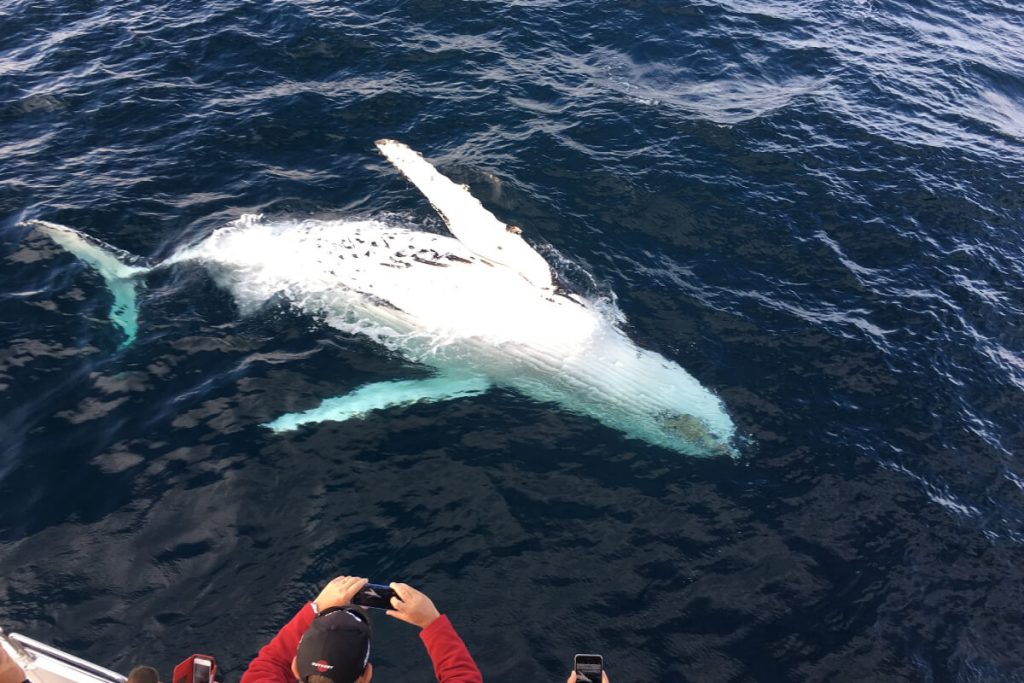
If it’s your first time joining a whale watching tour in Madeira, here’s what the experience typically involves:
- Tours usually last between 2 to 3 hours.
- All tours are accompanied by experienced guides and often by marine biologists who share insights about the species and behaviours observed.
- It’s common to spot several species during a single tour, and you may even see sea turtles or seabirds.
- Some operators offer a “no sighting, go again for free” policy, ensuring you get the most from your booking.
The tours are generally safe, family-friendly, and suitable for all ages, as long as you follow the crew’s safety instructions.
Tips to Make the Most of Your Whale Watching Tour
To ensure a comfortable and memorable adventure, here are some practical tips:
- Wear comfortable clothing and bring a light jacket; the wind at sea can feel cooler than on land.
- Use sunscreen, sunglasses, and a hat, even on cloudy days.
- If you’re prone to motion sickness, consider taking anti-nausea medication about 30 minutes before the trip.
- Bring a camera with a zoom or binoculars for better wildlife viewing.
- Book your tour in advance, especially during the high season (June to September).
And most importantly, stay present. Sometimes the best moments are the ones you simply watch and remember.
Conclusion: Whale Watching Tour in Madeira
A whale watching tour in Madeira is more than just a boat trip. It’s a chance to connect with the wild side of the Atlantic, guided by experts and surrounded by breathtaking scenery. Whether you’re lucky enough to see a breaching whale or a school of dolphins gliding beside you, the experience is sure to leave a lasting impression.


